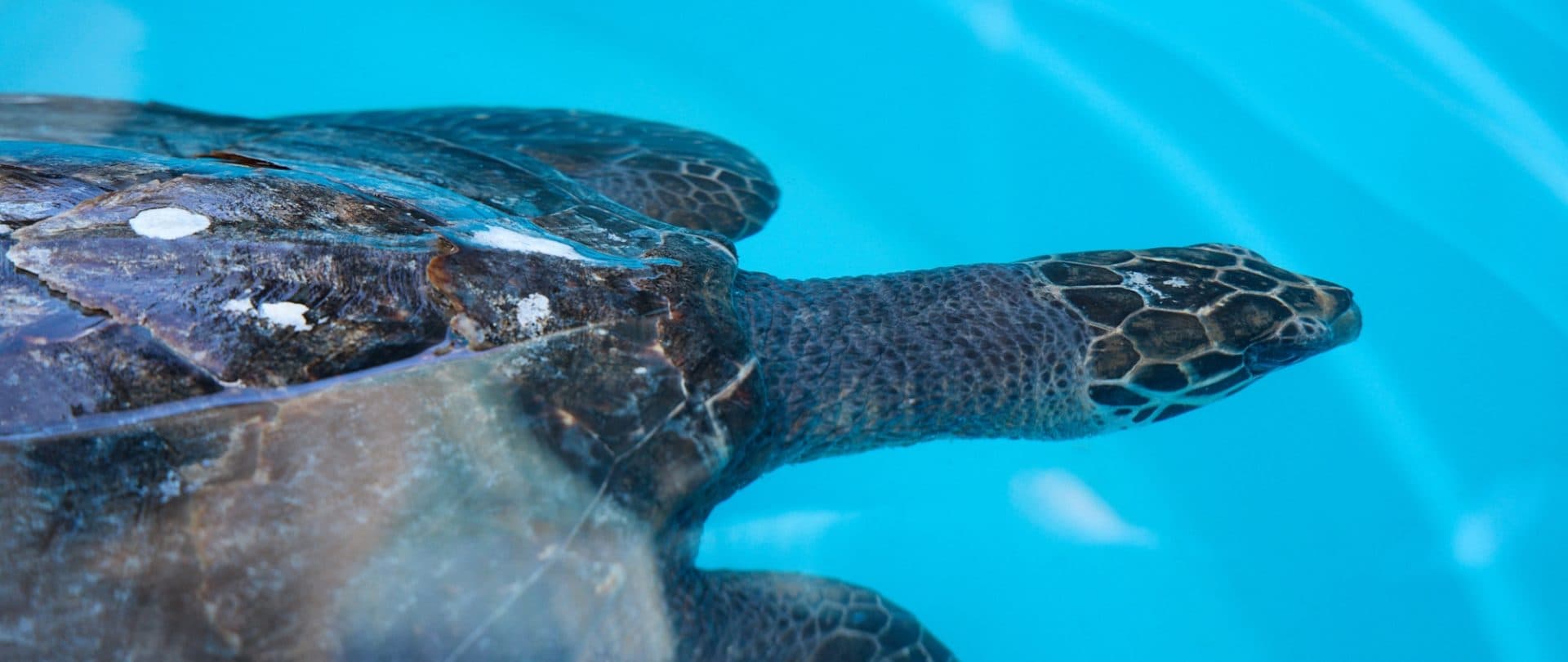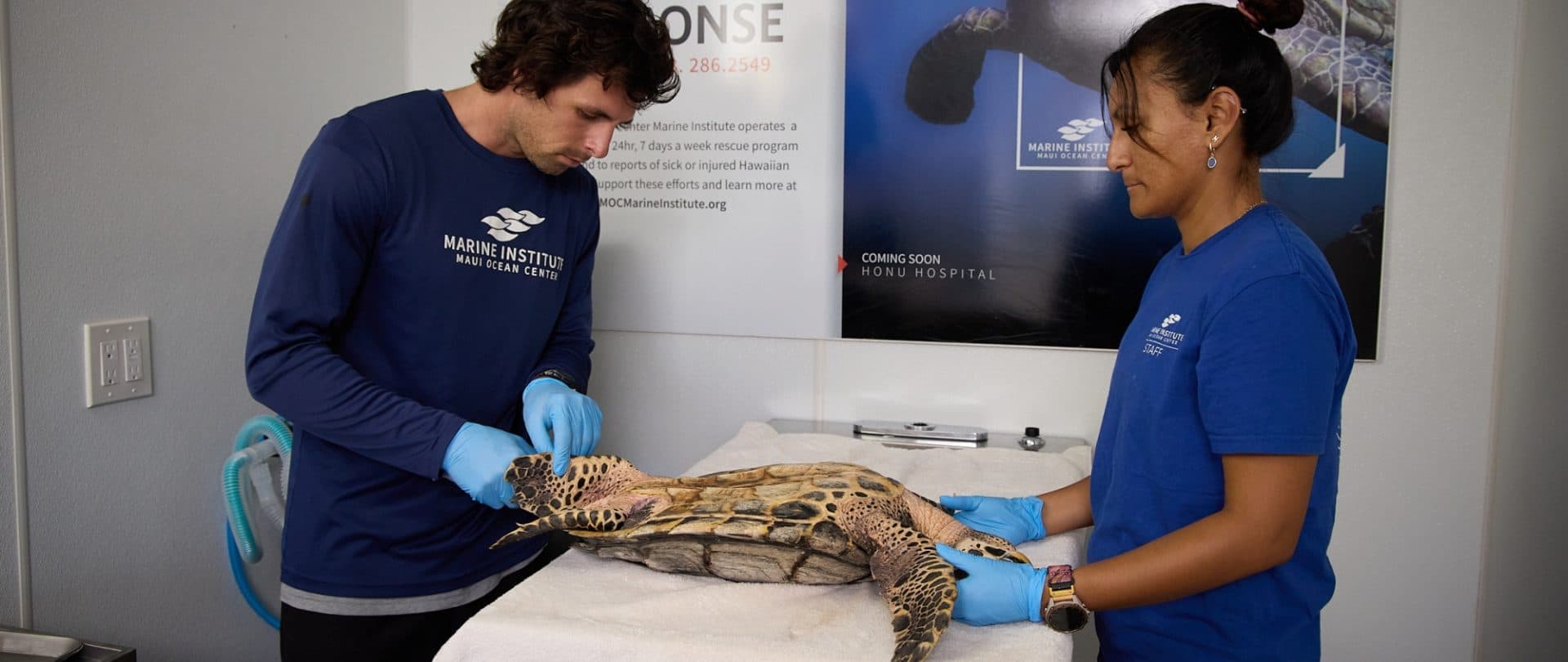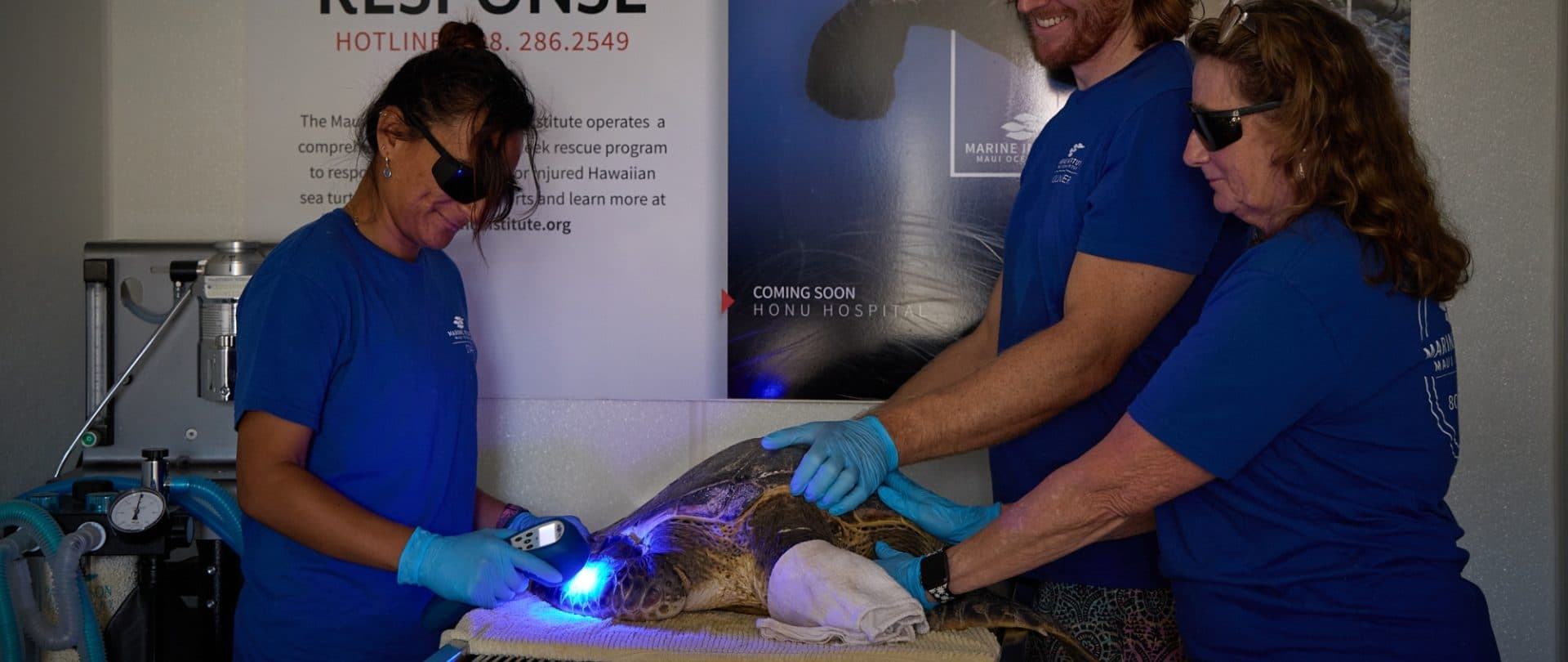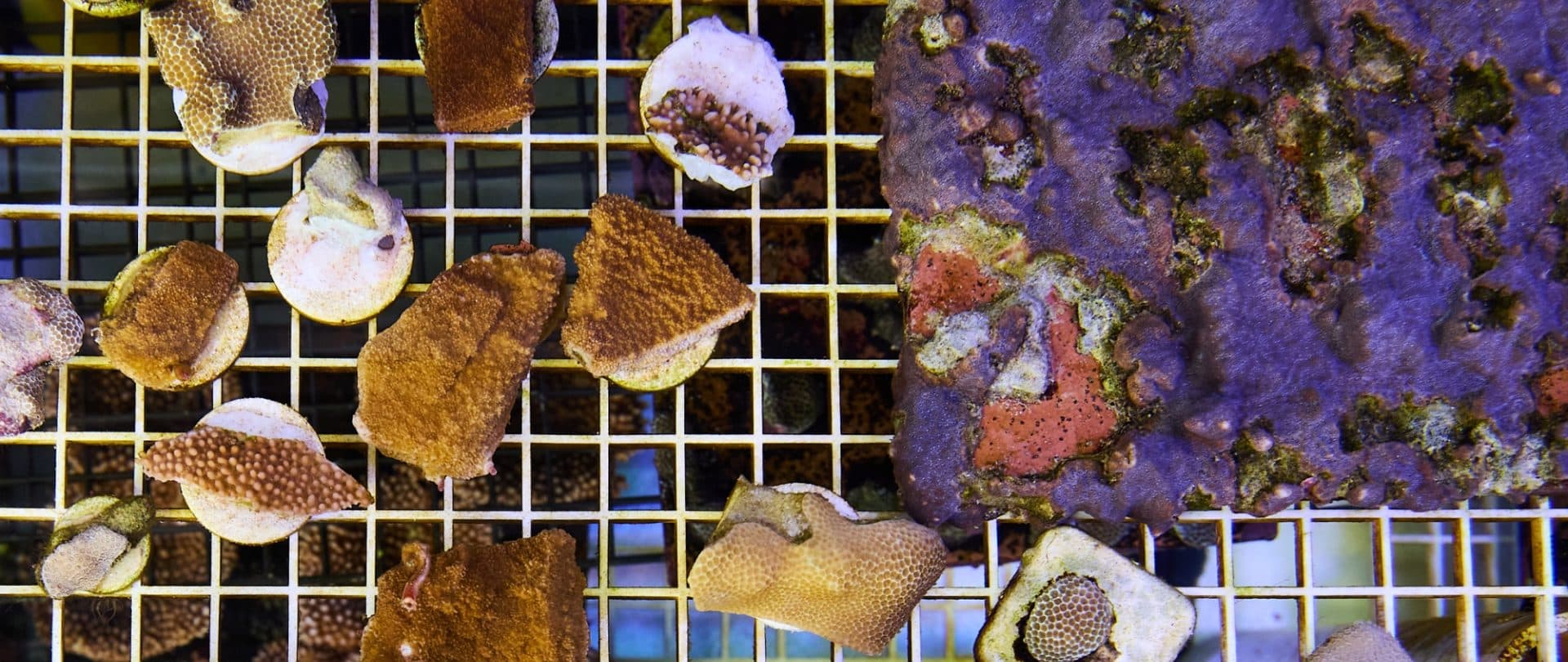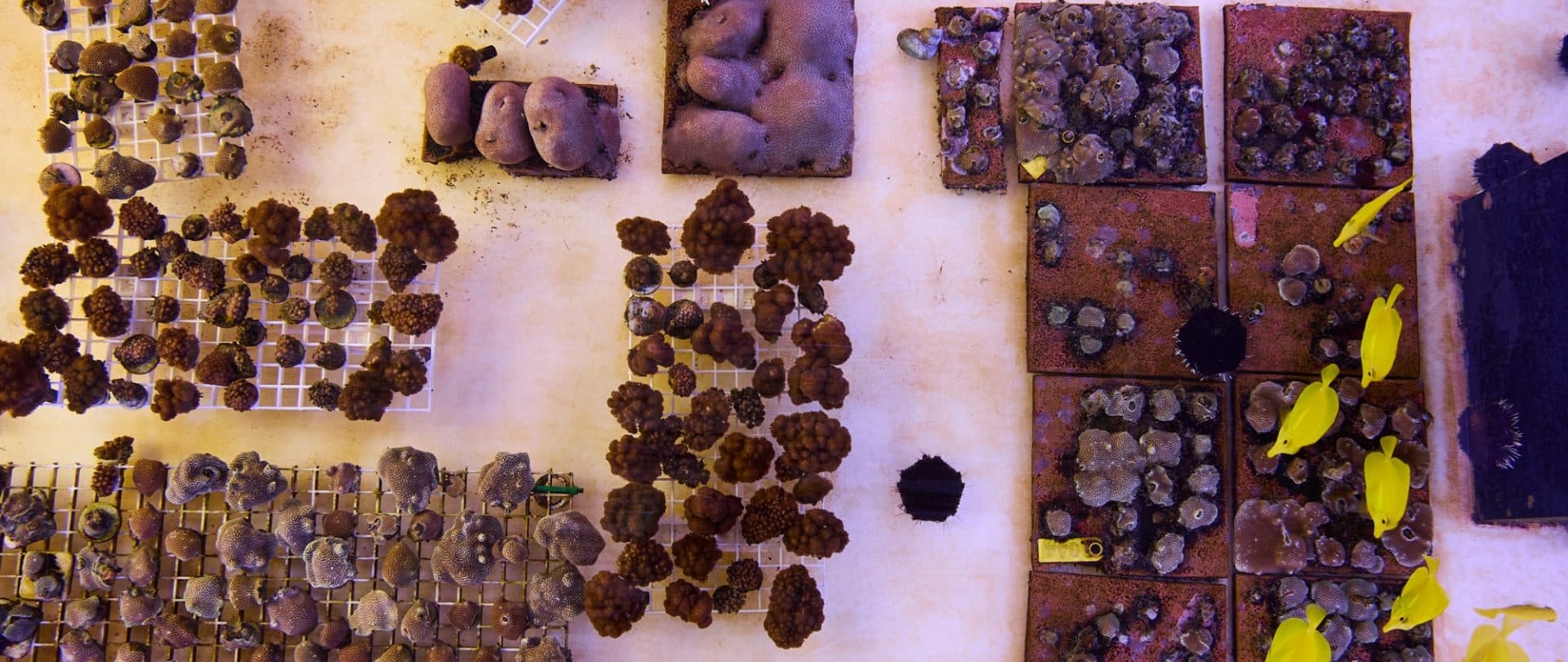Ocean Guardians
Inside Maui's crucial effort to safeguard honu and coral ecosystems
BY Krystal Kakimoto
A stroll on Maui’s beaches is always spectacular, but what bombards your senses—both in front of your eyes and underfoot—holds significance. Perhaps you’re fortunate enough to see a honu (green sea turtle) basking on the sand while walking on what you think are white and orange rocks. However, those honu only come ashore in a few places on Earth, and those “rocks” are actually remnants of living coral. Both are crucial to Maui’s and all of Hawai‘i’s cultural traditions and ecological health.
A local non-profit, the Maui Ocean Center Marine Institute, known as MOCMI, is a small but mighty influence ensuring the protection and health of honu and corals and leading in education and research of marine sciences on Maui. MOCMI’s founder and president Tapani Vuori took over as the general manager of the Maui Ocean Center—the aquarium—in 2015 under one condition: that this non-profit be formed. He wants the organization to ignite passion in young minds, “One goal is to create a robust career path for local kids here on Maui if they want to become marine scientists.” MOCMI Executive Director Dustin Paradis agrees and sees a future where kids don’t have to move off-island to work in this field. “I think it’s important that people know about us because we’re dedicated to developing systems and infrastructure on Maui that can service the community longer than our lifetimes. We want to build a research center and bolster the marine science economic engine in Maui County,” he explains. “We have the potential to impact Maui and its people far beyond what we initially thought possible.”
The institute’s work focused primarily on honu for the first seven years—rescuing, rehabilitating and researching the habits of these spectacular creatures. But now coral is having its day. “For us living on island, it’s paramount for our survival. It is protection for our land from beach erosion, storm surges and surf, and it houses nurseries for fish that we use for subsistence. It has immense cultural value to the Hawaiian people. In the Kumulipo (the Hawaiian creation chant) the corals are the first living thing referenced in that chant,” Paradis explains. Vuori underscores the importance. “Over 90 percent of people who come to the Maui Ocean Center still think coral is a rock. It’s a living organism. There are two kinds: hard skeleton coral and soft skeleton coral.” Both are in danger. Coral is imperative to the well-being of the ocean and other sea life, and MOCMI is instrumental in making sure this gem of the sea is preserved and propagated.
It’s no easy task. “It’s under threat. It’s facing a lot of different stressors—waste water mismanagement, eutrophication [and] degraded water sheds due to centuries of land mismanagement,” Paradis explains. “A lot of the wetlands here were filled in for development. Now when it floods, the sediment ends up on the reefs. Corals need sun and room to breathe, and we’ve filled their environment with sediment and wastewater.” Vuori emphasizes this point. “Besides bleaching, the other major trend is ocean acidification. The pH value is becoming more acidic. So what is happening is it’s melting the calcium carbonate skeleton which is the hard coral,” Vuori says.“I want people to be very cognizant and understand [that] the window of opportunity to address a lot of these things is slowly closing.”
Preventing that loss is full-time, cutting-edge work. “We are restoration practitioners. We implement climate-wise restoration through partnerships with research institutions, such as the Coral Resilience Lab at the Hawaii Institute of Marine Biology. We collect corals already dislodged from the reef and bring them back [to MOCMI] to selectively propagate the corals after we test them for thermal tolerance, identifying which coral colonies are tolerant to warmer temperatures,” Paradis says. “By using this technique, we can aid in assisted gene flow—the genes already exist, we’re just assisting [them] going in that direction. Once we ID these colonies, we can selectively propagate them. The other ones [less thermally tolerant] still go back [in the water], because we realize we don’t know everything yet. They might be tolerant to sediment, have better feeding mechanisms, etcetera, but we are aiming to help increase the available genetic material that will produce thermally tolerant corals.”
Gliding through the coral reefs are the honu, one of Maui’s most delightful natural attractions. Their relationship with coral is symbiotic. Their relationship with human-created items is not. Honu appear on shore entangled in nets and plastic bags or worse, and that’s where MOCMI and its stellar volunteers show up. Lead responders for honu rescue Alan Espiritu and Bruce Weyermann say that while saving lives, theirs have been altered—for the better. “It’s hard to believe that we’ve personally been involved in so many rescues, over a thousand cases, about 200 per year. We have had a few heartbreaking cases and so many amazing successes,” they explain as a team. Though impossible to choose a favorite story, they reflect on getting to help save Moby, a big boy of 235-pounds who lost a flipper to a fishing line entanglement and was at MOCMI for four months. “The staff, volunteers and us formed a strong bond with this turtle. After Moby was released back into the sea, we have had the privilege of seeing him over the years, and individuals who reported sightings of a marked ‘MA78’ turtle have also encountered him.” Paradis says toughness is in the honu’s genes. “I think sea turtles are special, because they’ve proven through the test of time they are resilient creatures. They’ve been in existence through ice ages, trials and tribulations. They are very interesting, and it’s a credit to their biology. They’ll have portions of their shell missing, missing flippers, been attacked by sharks, and they survive and heal.”
Despite their incredible tenacity and charisma, honu still need protecting, as does the coral with which they co-exist. Tapani Vuori and his colleagues were instrumental in getting local legislation passed that banned all non-mineral sunscreen use on Maui to curb coral damage and a new ordinance governing commercial lighting to protect honu and sea birds. Individually, we can also help. “First, give them [honu] the respect and space that they deserve. Imagine if you were laying on your couch in your house, and they started sitting on top of you or poking you, how would you feel?” Paradis says. Super-volunteers Alan and Bruce remind us to respect the ten-foot or three-meter rule—staying that far away from a honu in the water or on a beach. “Please don’t disturb them so they can rest peacefully. Avoid using flash photography or lights. Admire them from a safe distance without causing any disturbance. Always be mindful and respectful of Hawai‘i’s wildlife and culture, and bring Aloha.”
As with most conscious leaders on Maui, Vuori nudges visitors to think like a local. “Come and visit us, but find out about the sense of place. Be respectful. Don’t do things locals wouldn’t do. Not everyone wants to jump into beach clean up or taro planting, but look at how you can contribute to the place you’re visiting. That’s the filter I’d ask people to keep in mind when they come. I want people to enjoy themselves and have fun. But, really have humility and responsibility in your travels.” Paradis agrees, even if your efforts aren’t with the folks at MOCMI. “You can give back, financially or with your time. Volunteer at a local organization to have a meaningful experience while visiting. Indulgence and luxury have their place, but you’ll see the true colors of Hawai‘i if you get out and volunteer. There’s so much depth to stepping outside of the resort.”
Visit mauioceancenter.com to learn more about their experiences, exhibits and park hours. Visit mocmarineinstitute.org to learn more about the Marine Institute of the Maui Ocean Center, its conservation efforts and volunteer opportunities. All MOCMI activities are conducted in accordance with state and federal permits.
